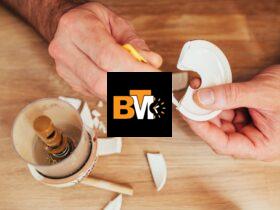In construction, even small missteps in submittals can lead to delays, rework, and added costs. Relying on emails or spreadsheets makes it easy to lose track of critical documents and approvals, an all-too-common issue in construction submittal management. Submittal software solves this by organizing files, tracking status updates, and keeping all stakeholders aligned.
It helps teams work faster, avoid errors, and stay on schedule. For contractors, architects, and project managers, it’s a practical way to manage growing project demands. Let’s take a closer look at why submittal software is becoming essential for modern construction firms.
The Hidden Costs of Outdated Submittal Management
Outdated submittal processes create delays, cause miscommunication, and lead to rework. Missed approvals and lost documents slow down projects and increase costs. Relying on manual methods can quickly put timelines and budgets at risk.
When submittal reviews stall in email inboxes or physical in-trays, the ripple effects can be devastating. Consider a scenario where a critical material approval is delayed by two weeks. This doesn’t just push back installation, it potentially:
- Forces rushed shipping at premium rates
- Creates labor scheduling conflicts with associated overtime costs
- Triggers contractual penalties for missed milestones
- Disrupts subsequent trades’ scheduling
The version control nightmare of paper-based or basic digital systems creates another invisible drain on resources. When teams work from outdated specifications or approvals, rework becomes inevitable. This error-correction cycle consumes up to 9% of project budgets, according to industry analysis.
These challenges are solved with construction submittal software, which creates a single source of truth with clear approval pathways and automated tracking. The technology introduces accountability where ambiguity once reigned, providing complete visibility into each document’s journey through the approval process.
Essential Features of Modern Construction Submittal Software
Today’s construction submittal solutions offer sophisticated functionality that transforms how teams collaborate on critical documentation. At their core, effective platforms provide a centralized, cloud-based document repository with real-time access. This foundation, often found in leading submittal tracking software, ensures that everyone from office personnel to field teams can retrieve the latest document versions.
One of the key benefits of automated submittal solutions is log creation, which eliminates hours of manual data entry and reduces human error. Construction Executive reports that over 80% of construction professionals now consider real-time cloud access to documents critical for seamless project management.
The most effective submittal platforms incorporate intelligent workflow routing that directs documents to appropriate reviewers based on document type, project phase, or expertise required. These preconfigured approval pathways eliminate bottlenecks and provide clarity about who’s responsible at each stage.
Mobile compatibility has evolved from luxury to necessity, enabling field teams to access, review, and approve submittals from any location. This feature alone can accelerate decision-making by days on fast-moving projects.
Integration capabilities with existing construction management software platforms create a cohesive digital ecosystem where submittal data flows seamlessly between estimating, scheduling, and financial systems. This connected approach eliminates the data silos that have traditionally plagued construction operations.
Advanced markup tools facilitate collaborative review through intuitive annotation features, allowing multiple stakeholders to provide feedback simultaneously without confusion or version conflicts.
Building Document Management: Beyond Basic Submittals
Comprehensive construction document management extends well beyond handling individual submittals. Forward-thinking construction firms leverage their digital platforms to create integrated systems where RFIs, change orders, and submittals exist within a unified framework. This connected approach ensures that changes or clarifications automatically trigger updates to related documentation.
Efficient document management plays a key role in speeding up project delivery. When teams can quickly access and retrieve essential documents, work moves forward without unnecessary delays. Searchable digital archives don’t just help during construction, they also support warranty tracking and facility maintenance long after the project wraps up. This long-term accessibility adds lasting value across the entire project lifecycle.
Metadata tagging revolutionizes document retrieval by enabling teams to filter content by specification section, approval status, trade, or custom attributes. This capability transforms how teams access information, reducing search time from hours to seconds.
Compliance documentation benefits particularly from digital management. Automated audit trails capture every interaction with documents, creating defensible records that protect firms in disputes and demonstrate regulatory adherence.
AI-Powered Innovations Transforming Submittal Processing
Artificial intelligence is revolutionizing submittal management through several groundbreaking applications. Machine learning algorithms now classify incoming submittals automatically, routing them to appropriate reviewers based on content analysis rather than manual sorting. This intelligence accelerates the initial processing stage significantly.
Automated specification scanning represents another transformative capability, with AI systems extracting key requirements directly from project specifications. These systems can flag potential non-compliance issues before human review begins, focusing attention where it’s most needed.
Predictive analytics tools identify potential submittal conflicts by analyzing historical project data and recognizing patterns that frequently lead to problems. This foresight allows teams to address issues proactively rather than reactively.
Voice-to-text technologies enable field personnel to document observations verbally, which the system then converts to searchable text within the submittal management platform. This capability bridges the gap between field observations and formal documentation.
Pattern recognition algorithms identify non-compliant submissions by comparing proposed materials against specification requirements, highlighting discrepancies that might otherwise escape notice until much later in the process.
Construction Workflow Optimization Through Connected Platforms
Breaking down information silos represents a fundamental advantage of integrated submittal software. When submittal data flows seamlessly between estimating, scheduling, procurement, and field systems, the entire project ecosystem becomes more responsive and aligned.
An integrated construction platform helps reduce communication delays by keeping everyone on the same page, whether in the office or on-site. With real-time data sharing and centralized updates, teams can respond faster, avoid duplication, and keep the project moving. This kind of integration supports construction workflow automation, streamlining processes and cutting down the time lost to miscommunication.
Standardized submittal templates eliminate inconsistency and ensure all stakeholders provide the required information in a uniform format. This standardization reduces clarification requests and speeds up the review processes.
Trigger-based notifications alert relevant team members when action is required, eliminating the “waiting to be told” delays that plague traditional processes. These automated prompts keep submittal packages moving through the approval cycle without manual status checking.
Project-specific submittal schedules linked to master timelines ensure that procurement and approval processes align with construction sequencing. This coordination prevents the all-too-common scenario where materials are approved too late for timely ordering and delivery.
Implementing Digital Submittal Solutions: A Strategic Roadmap
Successful implementation begins with a thorough assessment of current submittal processes and pain points. This evaluation should identify typical processing times, common bottlenecks, error rates, and stakeholder frustrations to establish a baseline for improvement.
Selection criteria for submittal software and other construction project management tools should focus on specific organizational requirements rather than generic feature lists. Consider factors like project complexity, team distribution, existing technology ecosystem, and growth plans when evaluating options.
Deployment approaches should follow a phased implementation strategy that minimizes disruption to ongoing projects. Many firms find success by piloting the system on a single project before a company-wide rollout.
Training is a key part of successful digital submittal processes, but it’s often overlooked. It needs to cover more than just how to use the tool, it should also explain changes to workflows and team responsibilities. Without this, adoption stalls, and the software won’t deliver its full value.
Maximization efforts should continue well after initial deployment. Regular reviews of system usage, workflow refinements, and adoption of advanced features ensure the organization extracts maximum value from its investment over time.
Future-Proofing Construction Projects with Smart Submittal Management
Digital submittal software is no longer optional, it’s essential for modern construction firms. It reduces delays, cuts errors, and keeps teams aligned. As projects become more complex, having a reliable, streamlined system ensures faster approvals, better communication, and stronger outcomes. Investing in the best submittal software for construction projects helps your team stay organized, responsive, and competitive.
FAQs on Submittal Software
- What is a Procore submittal?
Submittals are often created by a project manager and/or a contractor (or subcontractor) to request information from the responsible subcontractor about the specific items planned for fabrication and/or installation on a project.
- What is a submittal log?
In construction, a submittal log is a structured record that tracks and manages all documents, samples, and other information submitted by contractors or subcontractors to the project team for review and approval, ensuring adherence to project specifications and building codes.
- Who is the submittal manager in submittals?
The Submittal Manager is the user tasked with managing the entire submittals process. As a Submittal Manager, you assign items for submittal, review submissions, move packages along the submittals process, and publish final packages to your team.







Leave a Reply